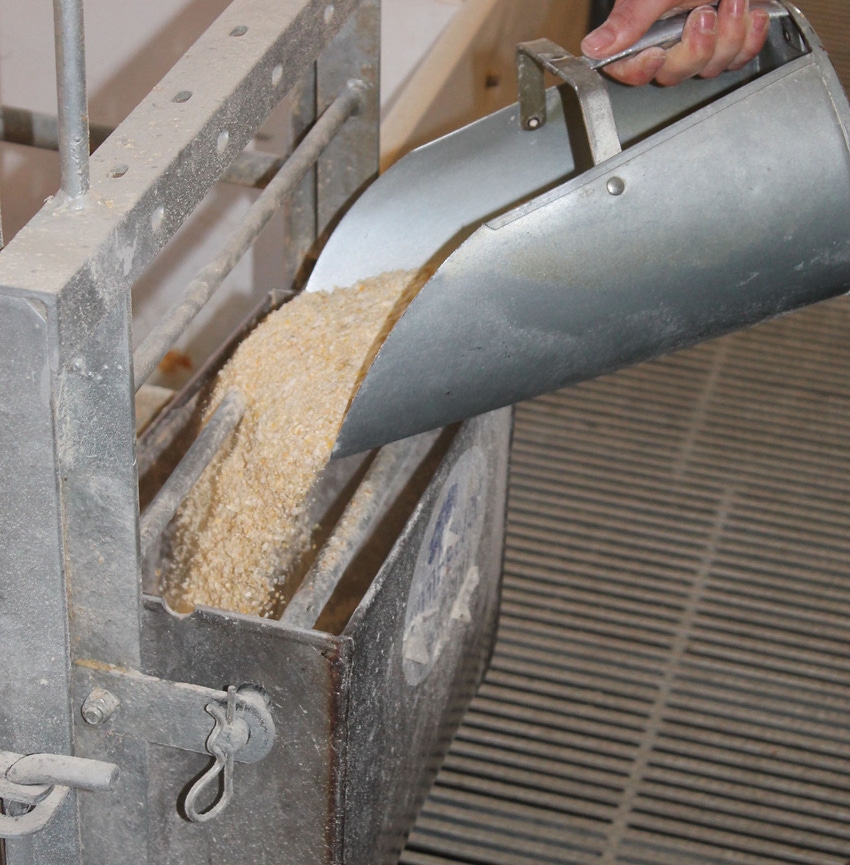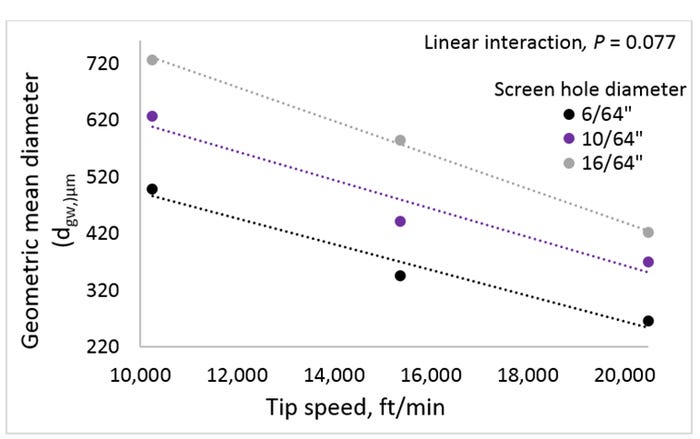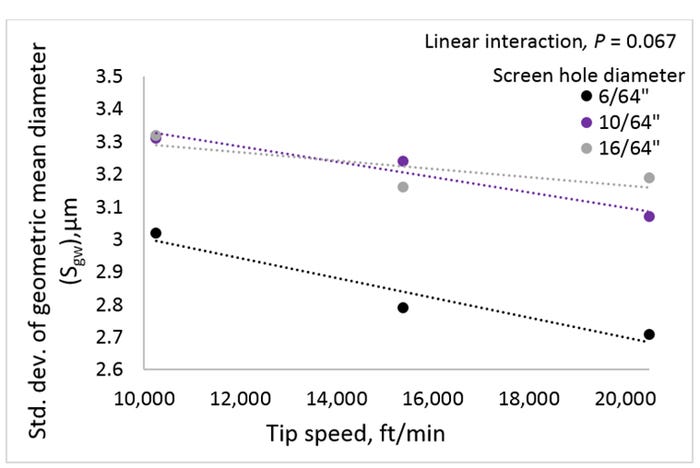Particle size range for a hammermill screen size can be adjusted through manipulation of the hammer tip speed, which is made possible by the use of motor variable frequency drives.
April 26, 2018

By Marut Saensukjaroenphon, Caitlin Evans, Kayla Sheldon, Cassandra Jones, Chad Paulk and Charles Stark, Kansas State University
The hammermill is a cost-effective method of reducing particle sizes of grains for feeding. There are several facets which can affect the final particle size achieved using the hammermill.
Traditionally, the most common method of changing the particle size is to exchange the size of screens for either a smaller or larger hole diameter. Screen changes lead to increased down time and loss of production within a facility. An alternative solution to reducing particle size is to adjust the hammer tip speed. This could potentially allow different particle sizes to be obtained from a single screen hole diameter, eliminating or reducing the need for screen changes. Because tip speed is a function of hammermill diameter and motor speed, it is necessary to have a variable frequency drive on the hammermill motor to adjust tip speed. The variable frequency drive allows the operator to adjust hammer tip speed while requiring minimum idle time.
It is hypothesized that lowering the tip speed of the hammers should result in a larger particle size when using the same screen hole diameter, thus allowing for more flexibility in particle size with any given screen size. Therefore, the objective of this experiment was to determine the effect of screen hole diameter and hammer tip speed on geometric mean diameter (dgw), geometric standard deviation (Sgw) and angle of repose of corn.
Whole corn was ground using a hammermill (Model 22115, Bliss Industries LLC., Ponca City, Okla.) equipped with 24 hammers, set ¾-inch from the screen. The chamber diameter measured 22 inches with a depth of 11.5 inches. The hammermill was equipped with a 25 HP motor on a variable frequency drive, resulting in 3,560 rpm when operating at 100%. Corn was ground in separate batches to create three replicates per treatment. Treatments were arranged in a 3×3 factorial with main effects of screen hole diameter (6/64-, 10/64- or 16/64-inch) and hammer tip speed (10,250, 15,375 or 20,500 feet per minute).
Samples of ground corn from each screen size and motor speed combination were analyzed for particle size and angle of repose.
There was a marginally significant linear interaction (P < 0.077) between screen hole diameter and tip speed for dgw and Sgw (Figure 1 and 2). For dgw, when tip speed increased from 10,250 to 20,500 feet per minute the rate of decrease in dgw was greater as screen hole diameter increased from 6/64- to 16/64-inch.

Figure 1: The effect of screen hole diameter on dgw based on tip speed

Figure 2: The effect of screen hole diameter on Sgw based on tip speed
Therefore, when tip speed was increased from 10,250 to 20,500 feet per minute dgw was reduced by 233, 258 and 305 microns for corn ground using the 6/64-, 10/64- and 16/64-inch screen hole diameter, respectively. For Sgw, when tip speed increased from 10,250 to 20,500 feet per minute the rate of decrease in Sgw was smaller as screen hole diameter increased from 6/64 to 16/64. Therefore, when tip speed increased from 10,250 to 20,500 feet per minute Sgw was reduced by 0.31, 0.24 and 0.13 for corn ground using the 6/64-, 10/64- and 16/64-inch screen hole diameter, respectively.
There was no interaction between screen hole diameter and tip speed for angle of repose. Increasing hammer tip speed increased (linear, P < 0.001) angle of repose (38.0 degrees, 41.4 degrees and 44.3 degrees, respectively). Increasing screen hole diameter decreased (linear, P < 0.001) angle of repose (43.9 degrees, 41.3 degrees and 38.6 degrees, respectively).
In summary, the particle size range for a specified hammermill screen size can be adjusted through manipulation of the hammer tip speed, which is made possible by the use of motor variable frequency drives. This experiment showed that when using a 6/64, 10/64 and 16/64 screen, increasing tip speed from 10, 250 to 20,500 feet per minute reduced dgw by 231, 258 and 350 microns, respectively. This not only expands the possible range of particle sizes that can accurately be produced, but also enables operators to quickly change the particle size output, while reducing idle time in the mill.
You May Also Like



